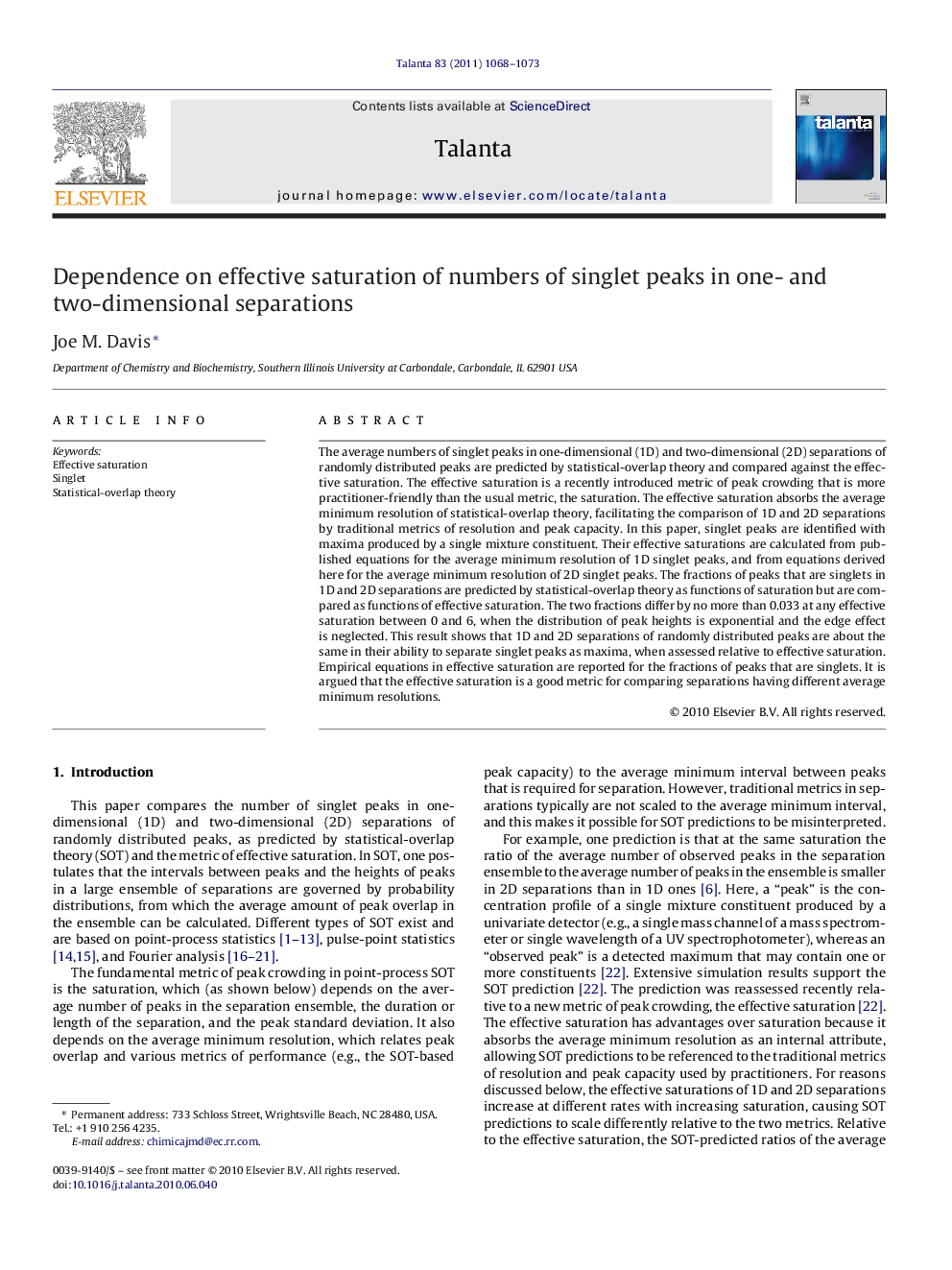| Article ID | Journal | Published Year | Pages | File Type |
|---|---|---|---|---|
| 10560656 | Talanta | 2011 | 6 Pages |
Abstract
The average numbers of singlet peaks in one-dimensional (1D) and two-dimensional (2D) separations of randomly distributed peaks are predicted by statistical-overlap theory and compared against the effective saturation. The effective saturation is a recently introduced metric of peak crowding that is more practitioner-friendly than the usual metric, the saturation. The effective saturation absorbs the average minimum resolution of statistical-overlap theory, facilitating the comparison of 1D and 2D separations by traditional metrics of resolution and peak capacity. In this paper, singlet peaks are identified with maxima produced by a single mixture constituent. Their effective saturations are calculated from published equations for the average minimum resolution of 1D singlet peaks, and from equations derived here for the average minimum resolution of 2D singlet peaks. The fractions of peaks that are singlets in 1D and 2D separations are predicted by statistical-overlap theory as functions of saturation but are compared as functions of effective saturation. The two fractions differ by no more than 0.033 at any effective saturation between 0 and 6, when the distribution of peak heights is exponential and the edge effect is neglected. This result shows that 1D and 2D separations of randomly distributed peaks are about the same in their ability to separate singlet peaks as maxima, when assessed relative to effective saturation. Empirical equations in effective saturation are reported for the fractions of peaks that are singlets. It is argued that the effective saturation is a good metric for comparing separations having different average minimum resolutions.
Keywords
Related Topics
Physical Sciences and Engineering
Chemistry
Analytical Chemistry
Authors
Joe M. Davis,
